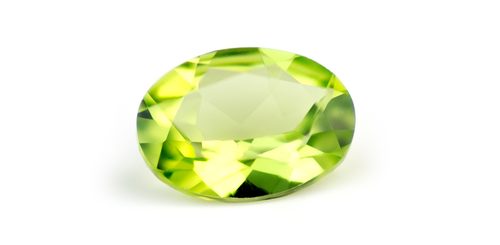Gemstone Spotlight: Peridot

Peridot is usually discovered by miners in the form of irregular nodules, which is a type of rounded rock that has the crystal within it. It is a fabulous green gem that forms within lava flows, and can become sizeable within the pockets and veins of different types of molten rock which is solidified. The three countries where it is found the most are in China, Vietnam and the United States, but also in Pakistan, Finland and Myanmar.
An Overview Of Peridot
Geologists have stated that many Peridot deposits are the result of the sea floor spreading whenever the crust of the planet splits, with the rocks inside its mantle being pushed upward on the surface. In Myanmar, the rocks are often deformed and altered as a result of the earth’s movement and ultimately become a part of the mountain range. Peridot may also come from outer space, being carried to the earth in meteorites which fall from the sky, although this is quite rare. Although the gem is mostly known for its greenish color, it may also have a mixture of yellow, which is the case in most Peridot found in jewelry.
In regards to its chemical composition, Peridot consists largely of magnesium and iron. It is the iron that gives this gem its yellow hue and the gem is routinely found inside volcanic rock which is referred to as basalt. Due to its rarity and the extreme elements involved in its creation, Peridot is sought after, though not as well-known as diamonds, sapphires or rubies. Peridot which forms due to volcanic activity will often have much higher lithium concentrations, as well as zinc and nickel. Peridot is a form of Olivine, which is relatively common, but gem grade peridot is quite rare, which gives it a high price tag.
The History of Peridot
Like other gems, man has known of peridot since antiquity. The Egyptians referred to it as being a sun gem, and believed that it could shield wearers from night terrors, especially when it was combined with gold. The gems were also believed to be capable of deterring evil spirits. The unusual name for this gem is taken from the Arabic name “faridat,” which translates into gem. Most of the jewelry which includes it is sourced from within the earth, as peridot which comes from meteorites is extremely rare, costly, and is desired for scientific study.
The gem has been mined in Egypt and other places, and is sometimes confused for being topaz or emerald. While it is sometimes compared to jade, which also has a green color; there are a number of differences between the two. While jade is mostly green, peridot has larger traces of yellow. The amount of green present in this gem is dependent on the amount of iron that exists within the crystalline structure. The largest cut for peridot can be found at the Washington D.C. Smithsonian Museum, which is 310 carat. It is also the official birthstone for August.


